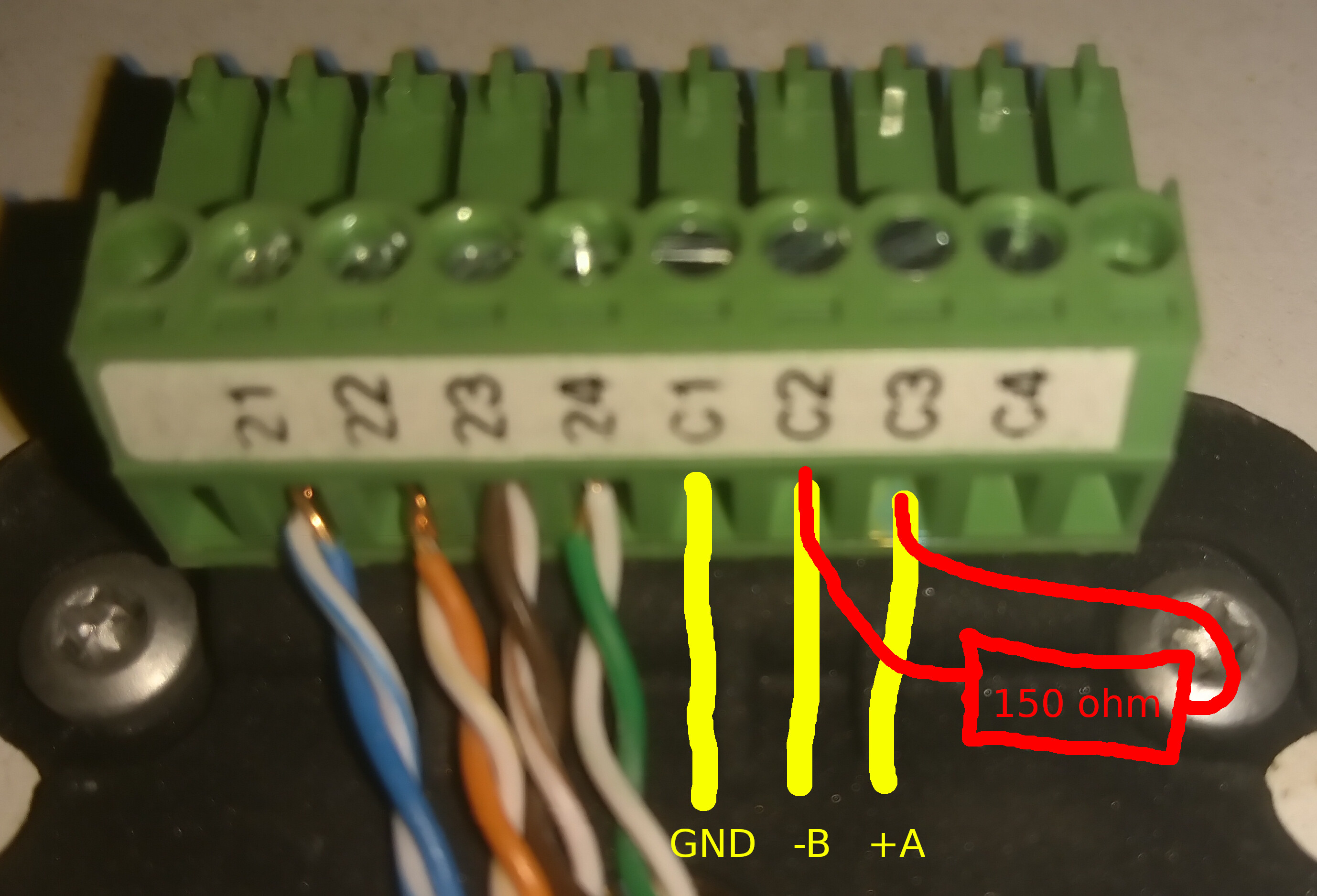Thanks for all the info!
About the hardware: I’ll have to look for such an USB to RS485 dongle. I’m not sure how to connect is. Is the picture correct? With the resistor that might not be needed. I’m not sure about the value: the documentation says 150 Ohm, but moojuiceuk talks about 120 ohm. I guess it doesn’t matter thát much.
About the communication.
- I have Windows, Linux and Arduino Uno at home. For my first steps I guess a graphical program might be the most easy. I’ve looked at Modbus Technical Resources, but the list is long and I’m very doubtful about what to choose. I have used WireShark before, but I’m not sure if that is a good choice. As for Modbus, I found this video a good intro to know a bit what it is all about. I guess my quest isn’t over yet…
- Later on it might be the most easy to have a Raspberry Pi or Uno to do something with the Modbus queries. But for the moment I already would be very happy if I could read the values on a Windows/Linux computer and change a setting. Eg. change the setting fordomestic water from 48 to 55 °C.
About the SD Card
- I also think the “001232;001248;001142;001157;…” refer to some sort of logs. There seem to be 4 such DAL-files each day. I already tried to figure out what they meant. My best guess would be date, time and temperatures (there are 9 sensors), but I can’t seem to map them to correct temperatures. The values 000055;000057 refer to “55% supply;57% Extraction” that looks obvious if I compare this with what the Optima-display says.
- The SET-files. Indeed, the 02 Domestic water value reflect the current setting. If they are stored on the SD rahter than NVRAM on the board, then I might have a problem if I (ever) succeed in building my own application? Eg. my future application notices that there is lots of power from PV and says to the heat pump that domestic water can heat up to 65 °C. The Optima might change this again to 48 °C :-(.
